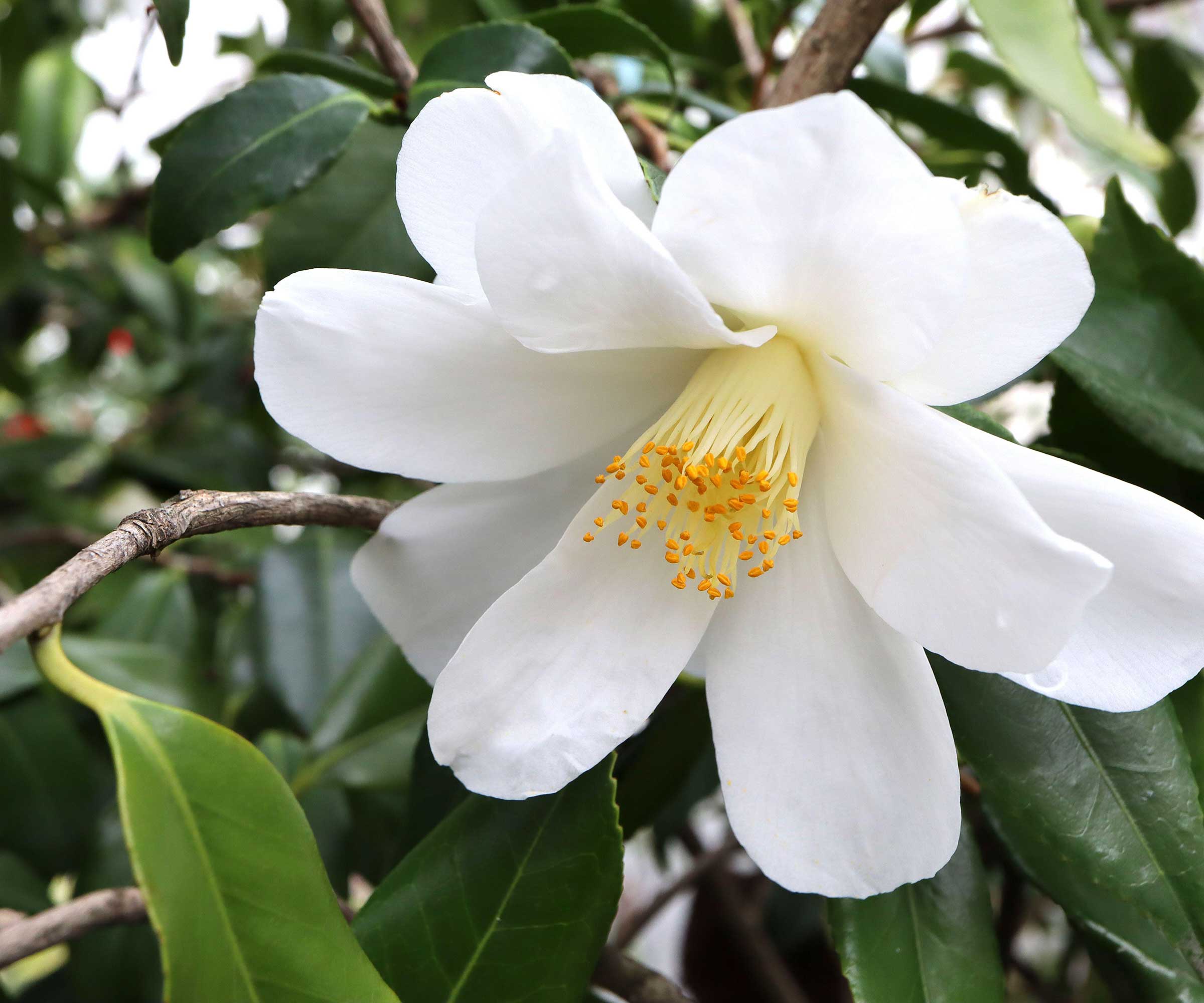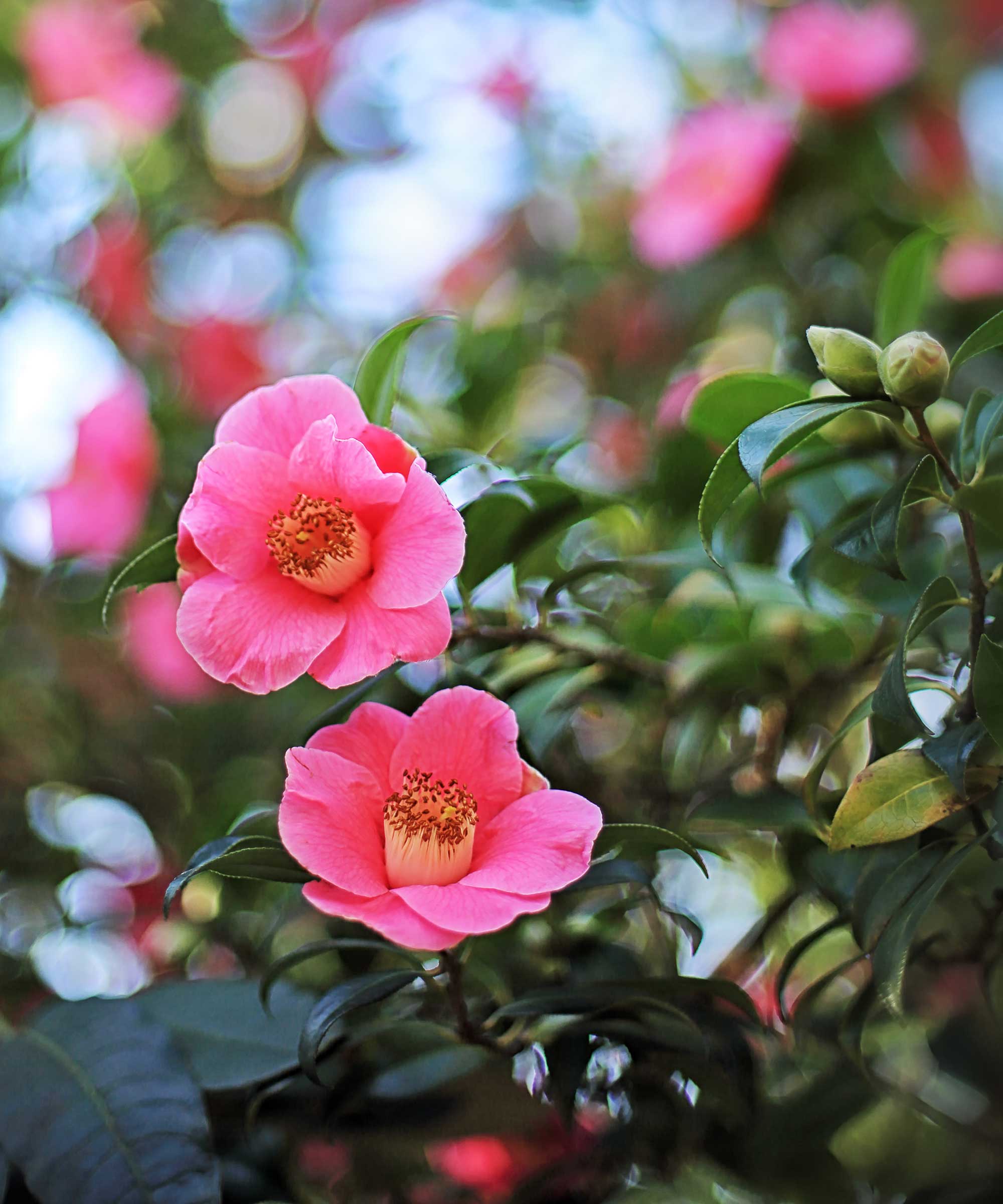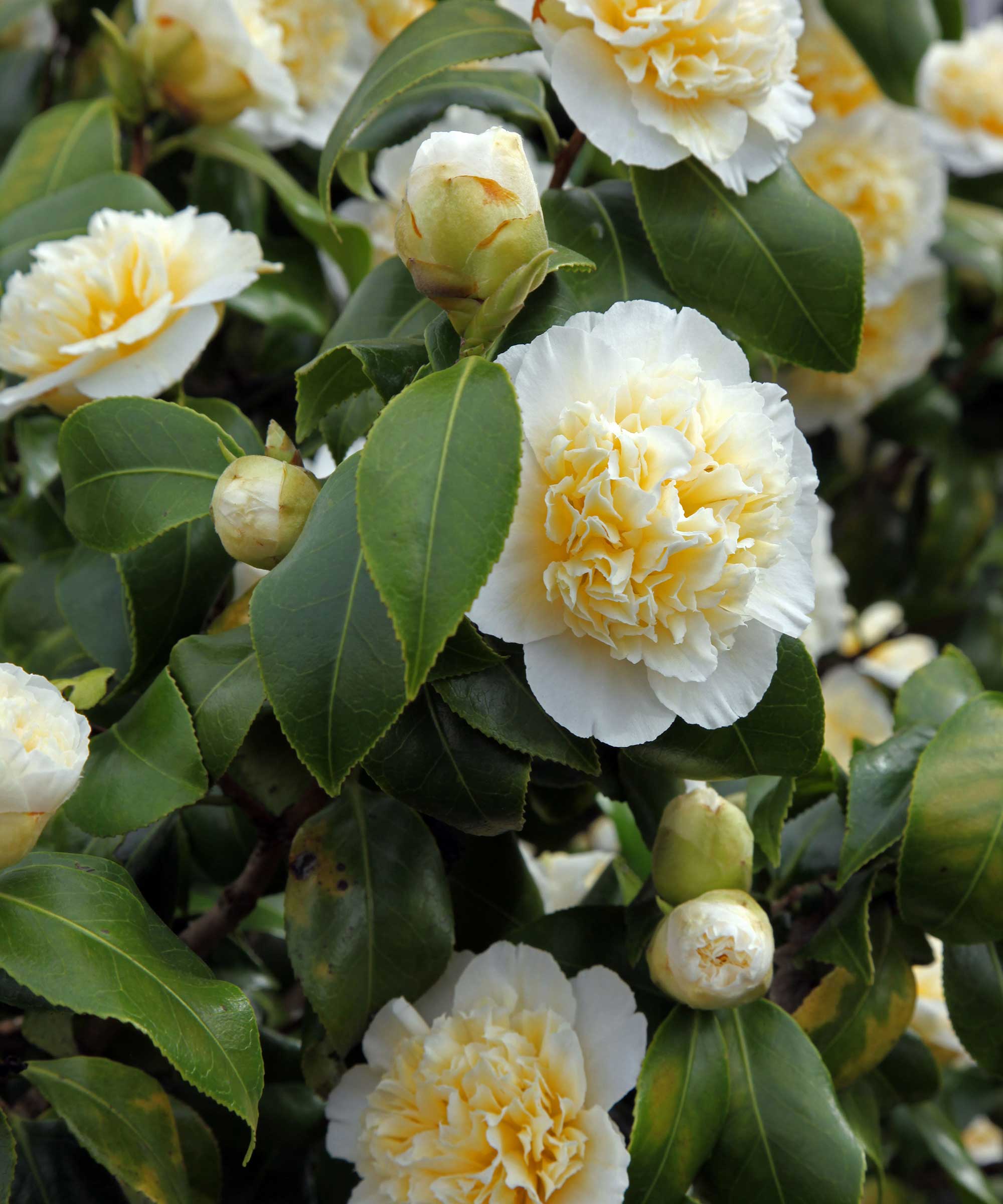
Q: I have recently moved house and my new front yard includes a camellia shrub. I have never had one of these before, but am eager to keep it thriving as its flower are gorgeous. Will it need fertilizing, and if so, what is the best way to do this?
A: How lucky to inherit a camellia – a beautiful spring-flowering shrub that provides blooms in red, white, or pink, depending on the variety. Fertilizing them can strengthen the plants and encourage more blooms, but it needs to be done in the right way, at the right time.

How to fertilize camellias
One of the most important things to remember when caring for camellias is that they like acidic conditions, as azaleas and rhododendrons do. 'On chalky or alkaline soils, they are unable to absorb enough iron and manganese to make the chlorophyll to keep their leaves green,' says Anne Swithinbank, a gardening expert. This results in yellowing foliage – and often the leaves are smaller, too. So, opt for an ericaceous fertilizer, such as Dr. Earth's Acid-Lovers organic feed from Amazon, to keep their environment optimal for healthy growth.
Follow the application instructions on the label as these can differ slightly from product to product.
When it comes to watering your camellias, remember that hard tap water will increase the alkalinity of the soil. If you live in an area that has this, it's much better to invest in a rain barrel so you can use harvested rainwater where possible.
Mulching with well-rotted compost in early spring is also beneficial for these plants, says gardening expert John Negus – although he warns to keep it away from the stems (this can result in them rotting). This will add valuable nutrients to the soil as it breaks down. It will also help the soil maintain moisture, which can prevent buds from dropping in the summer, explains Anne. Rake aside any existing mulch before applying fertilizer, and then replace it, topping it up if needed.

When to fertilize camellias
According to John, the best time to feed camellias is usually around April – which is when the blooms are fading. This will help to support the plants after they finish flowering, he says. If you're using a slow-release fertilizer, you can give them a second application in early summer to encourage strong bud development for next year's flowers. Fast-release fertilizers can be applied more frequently throughout the growing season – check the instructions on yours for specific guidelines. Either way, don’t feed camellias after the end of July, John advises.
The Royal Horticultural Society agrees, noting how fertilizing camellias later on in summer can cause the buds to drop. This is because it encourages a burst of fresh growth, which can then be damaged by the first frosts in the fall.

Fertilizing is an easy part of camellia maintenance and will help them thrive, as long as you get the timing right and use a feed that's well-suited to their needs. And if you decide to add a potted type of camellia to your collection, the advice above still stands – although it's also a good idea to plant them in ericaceous compost for an extra boost.







